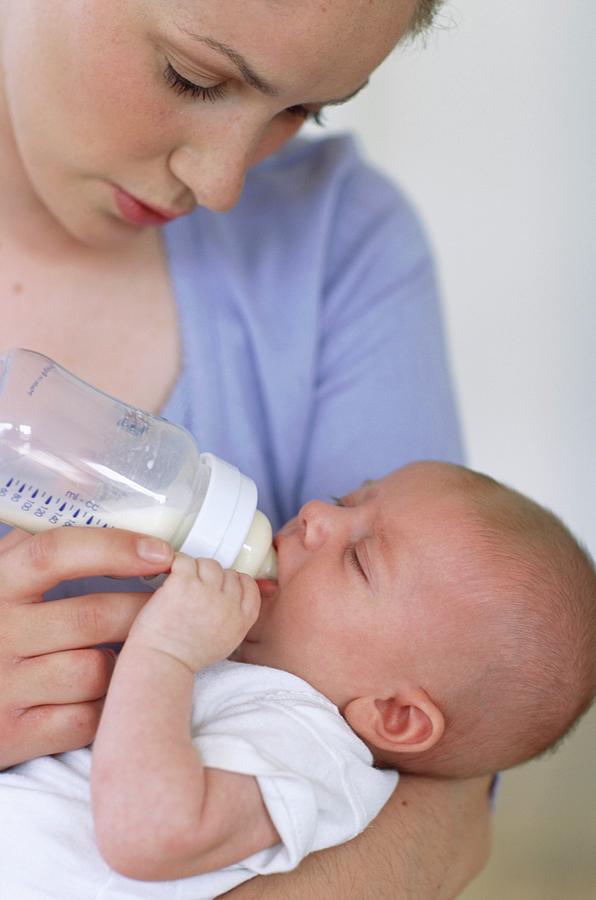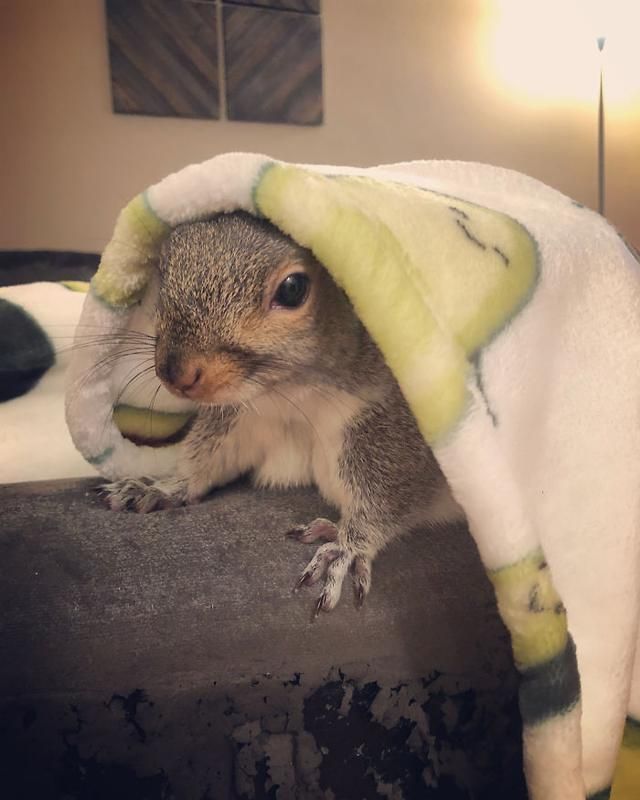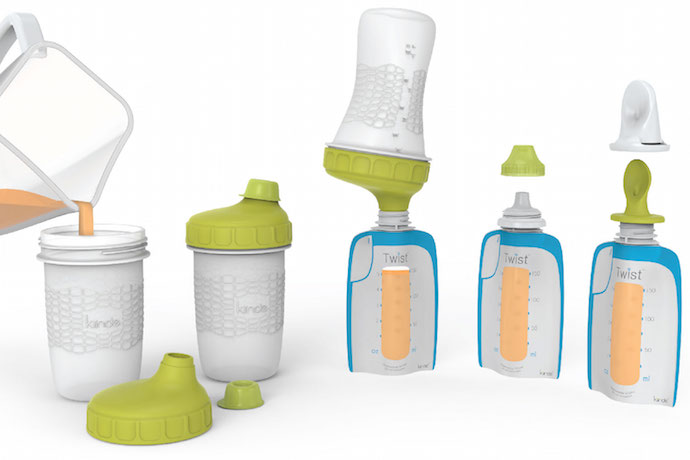Baby cries every time i try to feed her
Why Baby Squirms, Cries, or fuss while Bottle Feeding? (Bottle-feeding problems)
Sharing is caring!
0 shares
- Share
When a baby squirms, cries, or fuss while bottle feeding, you do everything you can to comfort them and get them to take a bottle. Read on if you want to find the solution to your baby’s bottle-feeding problems.
Breast milk or formula is the only nutrition for your baby in the first 6 months of their life. So, you make sure that they are drinking breast milk or formula from the bottle at each feeding session.
But when a baby squirms, cries, fuss, refuse a bottle, or fights a bottle despite being hungry, you try to figure out the reason for their behavior.
And sometimes, it is hard to find a reason why your baby squirms and cries while bottle-feeding or why she suddenly started refusing bottles when everything was okay the day before.
There are many reasons why a baby squirms, cries, fuss, or fight while bottle feeding. The most common reason includes – they might be having gas pain, reflux, loss of appetite due to illness, not hungry, tiredness, the problem with milk flow or nipple, growth spurt, or allergies to formula or breastmilk.
When a baby is squirming, crying, or fussing while bottle feeding, it is important to find out the root cause of the problem.
Paying attention to their behavior may give you some clues about their troubled bottle-feeding behavior. Once you know the reason, it will be easy to rectify the problem and return to normal bottle-feeding.
Disclosure: This post may contain affiliate links. As an affiliate and amazon associate, I earn commission on qualified purchases at no extra cost to you. Check our affiliate policy here.
Why does the Baby Squirms, Cries, or fuss while Bottle Feeding?Whether it is breastfeeding or bottle-feeding, it is never a smooth ride. When you think you got the solution to one feeding problem, a second problem arises.
When a baby suddenly starts squirming, crying, or fussing while bottle feeding, there is something wrong with them. They are giving you signals by displaying this behavior while bottle feeding.
If you pay attention to their behavior, is there any particular time of the day they are fussy while bottle feeding?
Or is there anything they do while bottle-feeding that catches your attention? Some of the common bottle-feeding problems that baby shows are listed below.
If they show any of the following signs, you need to help your child return to their regular bottle-feeding routine.
Baby squirms while bottle-feeding
Baby squirms and kicks legs while bottle-feeding
Baby flailing arms and legs while bottle-feeding
The baby is crying halfway through a bottle
Baby making clicking sounds while bottle-feeding
Baby refuses bottle
Baby turns away from the bottle
Baby chokes while bottle-feeding
Baby bites on the nipple while bottle-feeding
Baby is not swallowing milk (baby dribbles milk)
Baby fights bottle but is still hungry
Baby Fussy during bottle-feeding breast milk
Baby cries while bottle feeding at night
If you see your baby displaying any of the above behavior while bottle feeding, you need to fix the problem.
Once you know the reason for their bottle-feeding problem, it will be easy for you to come up with a solution.
Now let’s look at the reason for each of these problems and solutions to return to your regular bottle-feeding routine.
Baby squirms while bottle-feedingIf your baby squirms or moves too much while bottle feeding, there can be two possible reasons.
1.
DistractionsAs soon as babies start seeing and recognizing their surroundings, they start squirming or moving while bottle feeding. It could happen as early as 3-4 months.
When babies begin to discover their surroundings – light, sounds, or objects, they will squirm while bottle-feeding.
For example, if they see their siblings playing in the background while bottle-feeding, they will stop feeding and respond to the sound or noise they are making.
And as your baby grows a little older, they will squirm even more while bottle feeding because of their newly gained mobility.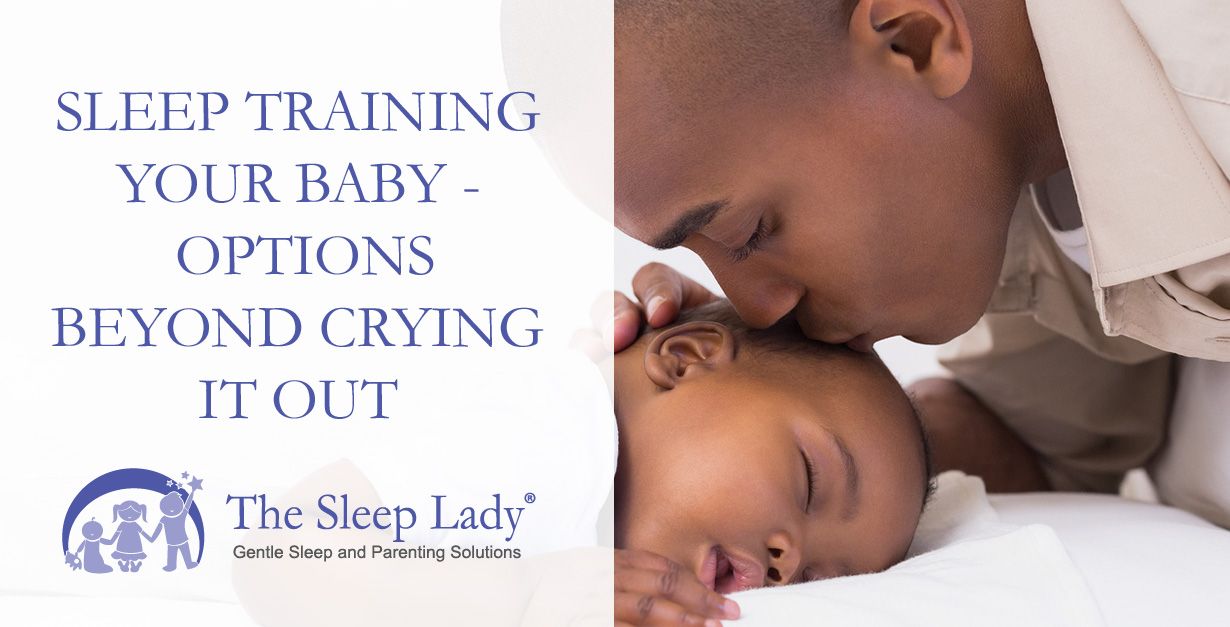
Solution
If your baby is moving so much or squirming while bottle feeding, you may want to feed them isolated.
Take them to a quiet room, dim the light, give them their favorite toy in their hand, and bottle-feed them.
2.
Silent RefluxAnother reason the baby squirms while bottle feeding could be silent reflux.
Reflux occurs when the content of the stomach backs up into the esophagus. A baby with normal reflux will spit up the formula, while a baby with silent reflux content stays in the esophagus.
Because the baby can’t spit up with silent reflex, they usually arch their back which may look like squirming while bottle-feeding or refuse to eat.
Silent reflux is hard to spot as no spit-up is involved, and people usually label silent reflux as colic symptoms.
Solution
If you suspect your baby has silent reflux, talk to your pediatrician. They will guide you next. Silent reflux is manageable with small changes like
Silent reflux is manageable with small changes like
- Smaller, more frequent feeding – to reduce the pressure on the stomach
- Slow flow nipple – to reduce the amount of air baby takes in while bottle feeding.
- Keeping baby upright while and after bottle-feeding – Hold baby in the upright position for 30 minutes after feeding to help reduce symptoms of reflux.
- Burping baby often while bottle-feeding
Related read: Why Baby’s Gas Smells like Rotten Egg or Sulfur?
Baby squirms and kicks legs while bottle-feedingWhen a baby squirms and kicks legs while bottle feeding, it is usually related to their tummy issues.
Too much gas can be painful for a baby. In an attempt to feel better, they squirm and kick their legs while and after bottle feeding.
If you see your baby squirming and kicking legs during and after feeding, they are likely suffering from gas pain.
Solution
Bottle-feed your baby in an upright position to reduce the amount of air they swallow while bottle feeding. Hold the bottle at an angle while feeding to avoid trapping air in a bottle.
Also, use slow flow nipples and burp your baby often while bottle feeding. Burp them every few mls to release the trapped gas from their tummy.
You can also regularly give them tummy massages if they seem to have consistent trouble.
Baby flailing arms and legs while bottle-feedingBabies are born with a startle reflex, which is present for the first 3-4 months of their life. When a baby is startled by loud noise or motion, they flail their arms and legs.
So, if you are feeding your baby in a surrounding with loud noise or significant motion, it may cause the baby to flail its arm and legs while bottle feeding.
But this behavior while bottle feeding is temporary and can be easily rectified by feeding the baby in a quiet, dark room.
Sometimes, changing feeding positions or locations can help the baby stop flailing arms and kicking legs while bottle feeding.
Another possible reason could be tummy trouble. Tummy ache or pain can cause the baby to flail arms and kick legs while bottle feeding.
Gas is very painful for a baby, and when flailing arms and kicking legs are accompanied by screaming, it is usually a sign that the baby is gassy or has tummy trouble.
Also, flailing arms, kicking legs, and inconsolable crying at a particular time of the day (usually evening) can be a symptom of colic in a baby.
The colicky baby usually has high-pitched, inconsolable crying in the evening.
Solution
Tummy issue is a common problem for a baby that are bottle-fed. So, you want to take care of how you feed the bottle to your baby.
Learning how to paced-bottle feed your baby can help reduce the episode of tummy trouble or air trapping in the tummy while bottle feeding.
Always feed your baby in a partially upright position, take a break for burping a baby after every few MLS and give them regular tummy messages to relived trapped gas from the tummy.
If you think you have a colicky baby, speak to your pediatrician. They will guide you on lifestyle changes if needed.
To relieve colic symptoms in babies, feed them in smaller quantities, walk them in a baby carrier, give them supervised tummy time, use a pacifier, swaddle them to make them feel secure, and give them a warm bath.
The baby is crying halfway through a bottleWhen a baby is happily taking a bottle, but crying halfway through it, most probably they are not hungry anymore or need a break for burping.
Bottle-fed babies are more prone to swallowing air bubbles than breastfed babies.
So trapped gas in their tummy may make them uncomfortable halfway through the bottle and result in crying and refusing the bottle when they are still hungry.
Solution
Feed your baby in a slightly upright position rather than flat on their back to reduce the excessive air bubble trapping while feeding.
Try pace-bottled feeding your baby. Paced bottle feeding is a method of bottle feeding a baby to decrease the amount of air they swallow while bottle feeding.
Also, makes sure to burp them after every few mls while bottle feeding. Burping will remove trapped gas from the baby’s tummy and allow them to finish the rest of the bottle.
The baby refuses a bottle and criesBottle refusal is a very common problem among bottle-fed babies. You may experience this behavior multiple times during your baby’s bottle-feeding journey. Here is a sign of bottle refusal in a baby,
- Baby turning away from the bottle
- Baby not swallowing milk from the bottle
- Baby playing with bottle nipple rather than drinking from it
- Pushing the bottle ways
- Screaming when the bottle comes near
There are many reasons why a baby would refuse a bottle suddenly when drinking fine the day before. The most common reason for refusal includes
The most common reason for refusal includes
- Baby is overtired
- The baby is not hungry
- Baby is sick (cold, nasal congestion, teething)
- Transitioning from breastfeeding to bottle-feeding breast milk or formula temperature is not up to their liking
- Change in the taste of frozen breast milk
- Milk flowing too fast or too slow
- The baby does not like the bottle or the feel of the nipple
Any change in a baby’s bottle-feeding routine can also suddenly cause the baby to refuse the bottle.
Solution
An overtired baby or a longer period between feeds can make the baby cranky and fussy while bottle feeding.
So, do not make drastic changes to your baby’s schedule. If it’s time for them to nap, go to a quiet room and soothe them to sleep.
Do not wait for the baby to be super hungry before offering them the next feeding. Hungry babies are cranky babies. Feed them before they are in the Hungry phase.
Hungry babies are cranky babies. Feed them before they are in the Hungry phase.
The sick baby also loses their appetite. So if your baby has fever, cold, nasal congestion, or teething, do not force-feed them. Make them comfortable and then offer to feed them.
In the first few months, they catch cold and nasal congestion frequently. When they are congested, they won’t be able to breathe and bottle feed at the same time, hence the bottle refusal.
This simple solution is to put 2-3 drops of nasal saline in the baby’s nostril before each feed to unclog their nose. Then, they will take a bottle without fuss if they can breathe.
Transitioning from breastfeeding to bottle-feeding can cause the baby to refuse the bottle. Check out this article on how to transition from breastfeeding a baby to bottle-feeding for tips and tricks.
Another common reason for bottle refusal is a change in temperature and taste of breast milk or formula you give them.
If someone else has recently started making a bottle for them, then make sure you know your baby’s liking.
Any temperature change (too hot or too cold) can cause the baby to refuse the bottle.
Also, make sure to do a smell and taste test of defrosted breast milk before giving it to your baby.
As higher lipase content of frozen breast milk may change the taste and smell of breast milk significantly.
Baby chokes while bottle-feedingBaby choking while bottle-feeding is often due to the positioning and size of the nipple.
Baby flat lying on their back may lead to a faster flow of the milk that the baby can’t handle, resulting in choking.
If you see your baby dribbling milk from the side of their mouth, it is likely that their mouth is full of milk they can’t handle.
A nipple with wide holes can also contribute to how much milk the baby gets when sucking while bottle feeding.
You want to start with a slow-flow nipple, and once they are a little older and can handle the flow of the milk, change the nipple size.
Overflow of the milk in the baby’s mouth can also cause them to break suction while bottle-feeding resulting in gagging and choking.
Solution
Bottle feeding baby in a partially upright position with holding the bottle at the level of the nipple will help control the milk flow.
Paced bottle feeding method allows the baby to control the milk flow. Paced bottle feeding, check out this ARTICLE.
The baby is not swallowing milk.Baby not swallowing milk is another classic bottle-feeding problem. If your baby is not swallowing milk from the bottle, you want to check the flow of the nipple before taking any other action.
If the nipple opening is small or blocked and the baby cannot suck the milk from the nipple, they have nothing to swallow in the first place.
A newborn usually starts with a slow flow nipple. If your baby is not getting enough milk in their mouth while sucking, they may get frustrated and refuse the bottle.
In this case, change the size of the nipple and see if the problem still persists.
If you find that nipple size is okay and the baby is getting enough milk in their mouth while sucking (evident by the baby dribbling milk from the side of their mouth) but still not swallowing milk, then you have a problem.
You also want to keep an eye on their behavior. For example, is it halfway through the bottle feeding? Or only at certain times of the day they are not swallowing milk.
If they are not swallowing milk halfway through the bottle, it could mean that they are not hungry anymore, or they are just being playful, or they are learning how to dribble milk from the side of their mouth (it’s fun for them).
In addition, the baby may not swallow milk if they are just being fed solid food and they are not hungry anymore.
Solution
If the baby is not getting enough milk in their mouth, then change the size of the nipple.
But if you find that they are just not swallowing milk even though their mouth is full of milk, it could mean they are not hungry anymore.
So adjust your feeding schedule if you have introduced solids to your baby.
Baby fights bottle but hungryIs your baby pushing the bottle away but still hungry?
There are many reasons why a baby is fighting or pushing the bottle away but is still hungry. All the reason listed above in the baby refuses bottle section can apply here.
Baby can refuse a bottle due to nipple problems, milk too hot or cold, change in the milk’s taste, change in baby’s feeding routine, transitioning from breastfeeding to bottle-feeding, sickness, and more.
Once you rule out all the common reasons why a baby fights a bottle when still hungry and nothing works, it is possible that the baby might have reflux.
A baby fighting a bottle or pushing the bottle away when still hungry is one of the signs of a baby with reflux.
If the baby has normal reflux, you will also see the baby excessively spitting milk after feeding and gagging while feeding.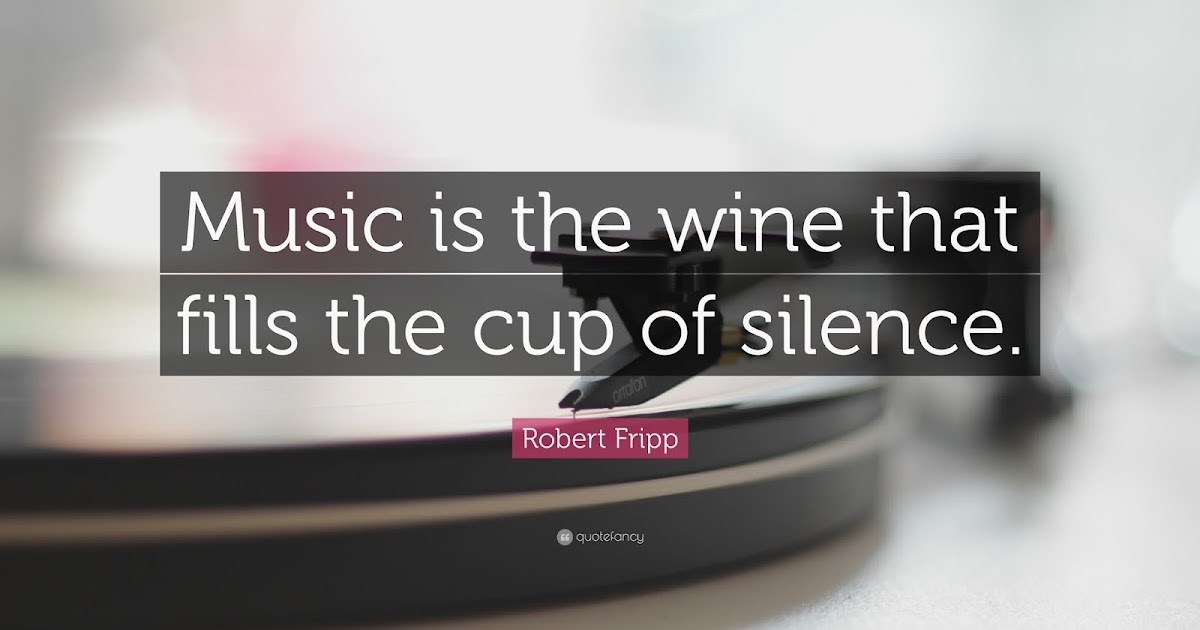
Solution
If you have tried everything mentioned above and nothing works in getting the baby to stop fighting the bottle when still hungry, you may need to speak to your pediatrician to rule out the possibility of reflux.
To relieve the symptom of reflux, feed your baby in an upright position, give them smaller feeding at a time, and hold them upright for 30 minutes after feeding.
My baby was a reflux baby. He would fight the bottle and kick his legs while feeding. He was also excessively spitting after each feed, even when he was held upright for 30 minutes after each feed.
Then upon our pediatrician’s recommendation, we started giving him probiotics which help reduce the occurrence of spit-ups.
Fortunately for my baby, it was not uncomfortable; he would feed, spit-up, and then go back to what he was doing for the first 4 months.
So, it was more of a laundry problem than anything else. He got better and stopped spitting as soon as he turned 5-month-old.
If your baby is fussy during bottle-feeding breast milk, there are several reasons behind this behavior.
- Breast milk is not at the right temperature for the baby’s liking
- Change in the taste of breast milk
- Spoiled breast milk
- Allergies to milk protein
- Problem with the flow of the milk
As mentioned earlier, a slight deviation from a baby’s liking can make them fussy while bottle-feeding breast milk.
Check all the possibilities of frozen breast milk – smell and taste test, correct temperature to baby’s liking, change the way you make a bottle for your baby, change the bottle and nipple.
If you have accidentally offered your baby expired breast milk, they may fuss while bottle feeding.
Excess lipase in stored breast milk may change the taste and smell of breast milk. And if you think this is the case, you may want to try giving your baby freshly expressed breast milk to see whether they are drinking from the bottle or not.
Your frozen breast milk is a problem if they drink from the bottle.
To reduce the odor of frozen breast milk, you can mix freshly expressed refrigerated breast milk with defrosted cold breast milk.
If you have ruled out any other possibility and the baby is still fussy during bottle-feeding breast milk, the last possibility is allergies to cow milk protein.
Speak to your doctor about the milk protein allergies and your baby’s symptoms, and they will be able to rule out the solution if that is the case.
Baby cries while bottle feeding at night.Baby crying while bottle feeding at night is mainly associated with tiredness. If they are not sleeping well during the day or night, they will not feed well.
An overtired baby will fall asleep without finishing their bottle. And when they are hungry, they will wake up often and demand to feed.
Another possibility is wet nappies. But if your baby still cries while bottle feeding at night after a diaper change, they are probably overtired.
You also want to ensure that they are dressed appropriately for the room’s temperature. They will fuss while bottle feeding if they are too hot or too cold.
Solution
Make sure that baby gets enough nap times during the day and sleeps on time at night. In addition, you also want to make sure that you feed your baby before they get overtired.
If your baby still cries while bottle feeding at night, you may want to dream feed them.
In dream feeding, you feed your baby before they are fully awake. For example, if a baby’s nighttime wake time for feeding is 2 am, you want to give them a bottle at 1:45 am in their sleep.
Then, in their sleep, they may be able to drink from the bottle without fussing.
What do you do when a baby cries or fuss while bottle feeding?When a baby cries out of fuss while bottle feeding, you need to stop feeding them right away, do not force-feed them if they are fussing while feeding.
First, try to calm them down and then find out why they cry or fuss while bottle feeding.
Go through every scenario listed above and find the reason for their problem. For example, they might be in pain or not get milk from the nipple.
Once you find out the reason, you will be able to come up with a solution.
How do you bottle feed when the baby squirms, cries, or fuss?An underlying issue is when the baby is squirming, crying, and fussing while bottle feeding. Sometimes, these issues are easy to fix.
However, before you jump to any conclusion or take drastic measures of changing your formula or diet (if breastfeeding breast milk in a bottle), take this minor step.
The majority of bottle-feeding problems are associated with tummy trouble in the baby.
So here are general tips for feeding a bottle to a baby when they are fussy.
- Feed them in a quiet room without any distractions. Dim the light and bond with your baby when bottle feeding.

- Check their nappy before you start feeding your baby. It could be as easy as changing a diaper to make them stop fussing while bottle feeding.
- Paced bottle feed your baby. It will help reduce the amount of air the baby is swallowing while bottle feeding.
- Check the bottle nipple for proper flow. Use age-appropriate nipple size to avoid too slow or too fast milk flow while bottle feeding.
- Keep your bottle-making routine consistent if more than one person is involved in caring for a baby.
- Give baby formula or breast milk at a temperature of their liking (37°C).
- Feed your baby before they are over-hungry or overtired.
- If the baby refuses the bottle midway, do not force-feed them. Try to assess the situation. Look for a pointer – baby dribbling milk, baby gulping milk, baby squirming and kicking legs, or baby-making clicking sound. Then find a solution accordingly.
When a baby squirms, cries, or fuss while bottle feeding, it may seem complicated to find a solution as there are so many variables.
But if you pay attention to their behavior while bottle feeding, you may be able to come up with a solution.
I hope this article gave you some reasons and solutions for your baby’s bottle-feeding problem.
Let us know in a comment below if you know any tricks to a bottle-feeding fussy baby.
If you find this article helpful, consider sharing it.
Baby Fusses or Cries During Feeding: Causes & Solutions
Is your baby fussy every time you offer the breast? Do they cry, making it hard to breastfeed?
I’ve been there and know how it can be distressing when your baby is irritable while breastfeeding. It can make you question whether you’re doing something wrong and why the experience isn’t turning out how you imagined.
To help set your mind at ease and offer you some hope, we’ll share everything we know about what makes a baby upset during breastfeeding.
We’ll help you determine the cause of your baby’s fussiness. We’ll also offer our solutions so your breastfeeding sessions can return to being a peaceful experience you both enjoy.
Causes of Baby Crying During Feeding
Half the battle is finding out why your baby is crying and fussing when they should be enjoying their time at the breast. You want to know your baby is getting enough milk and thriving. But it’s hard to be sure when they always latch on and off, crying in between.
Let’s discuss some possible causes.
1. Baby Isn’t Latching On
If your baby is fussing or crying, getting them to latch on to feed can be challenging. Whether overtired, overstimulated, or just plain hungry, a crying baby is unlikely to latch.
The Solution
Begin breastfeeding while your baby is calm and awake, before they get too hungry. Watch for early hunger cues such as rooting, smacking their lips, sucking their hands, sticking their tongue out, or waking from sleeping. Crying is a late sign of hunger.
Swaddling your baby and holding them close, dimming the lights, or moving somewhere peaceful and quiet might also help.
Another thing you can try is squeezing a few drops of milk onto your breast to entice your baby to latch on. The taste and smell of the milk might stimulate them to feed. Changing position or changing breasts can also work sometimes (1).
The taste and smell of the milk might stimulate them to feed. Changing position or changing breasts can also work sometimes (1).
2. The Milk Flow Is Too Fast or Too Slow
Paying attention to when your baby starts to cry might shed some light on the reason.
If your baby is fussier in the morning, it could be that your overly full breasts release too much milk too quickly. Your breasts may have become engorged with milk during the night and your baby can’t cope with this forceful let-down.
Conversely, if they are fussier in the evenings, maybe the milk release is too slow and they get frustrated. They become impatient, waiting for the flow of milk that comes with the let-down, and start crying.
The Solution for Fast Milk Flow
A strong release of milk, or overactive let-down, can make your little one choke, gag, or cough when they’re feeding. They might unlatch from the breast because they don’t like or can’t cope with the fast flow. They could also be gulping a lot of air with the milk and getting gassy, which causes more upset.
They might unlatch from the breast because they don’t like or can’t cope with the fast flow. They could also be gulping a lot of air with the milk and getting gassy, which causes more upset.
These are some of the things you can do to counteract this:
- Express before feeding: Pumping some of your milk before feeding, or expressing by hand, can help slow down the flow. After you feel the first let-down pass and you see the flow is slowing, put your baby to your breast.
- Lie back when nursing: Adopting a laid-back feeding position with your baby lying on top of you can slow the flow. You could latch your baby on and then lie back against some cushions or pillows. Milk will flow against gravity and won’t pour down your baby’s throat.
- Burp regularly: When your milk is flowing fast, your baby may gulp lots of air while feeding. A gassy baby is a fussy baby, so burp them regularly, during and after the feed.
- Feed one side at a time: Alternate your breasts at each feed.
 That way, once the flow slows down on the breast your baby is feeding on, they might stop fussing.
That way, once the flow slows down on the breast your baby is feeding on, they might stop fussing. - Take a feeding break: If your flow is too much for your little one to cope with, remove them from the breast for a few seconds. Let the excess milk leak onto a towel, and offer the breast again when it stops. This might make your baby fussier for a while, but it will pay off in the long run.
The Solution for Slow Milk Flow
Your baby is hungry, but your milk is not coming quick enough. Just as we can get “hangry” when we need food or drink and aren’t getting it, our babies can too!
Luckily, we have some things you can try to combat a slow flow or delayed let-down:
- Stimulate the flow: Either pumping or hand expressing a little milk before latching can kick-start your let-down reflex. Once you have a steady flow, then you can put your baby to your breast.
- Warm compress: Use a warm towel or compress for a few minutes to stimulate letdown.
 Place it on your breasts just before each feed.
Place it on your breasts just before each feed. - Massage: Massaging your breasts before and during a feed can help the milk flow faster.
- Try breast compressions: If you notice your baby is about to start fussing and might unlatch, squeeze your breast. This will give your baby a burst of milk, keeping them actively feeding.
- Get comfortable: Breastfeeding a fussy baby can be frustrating for you as well. Try and feed in a relaxing position, away from distractions. It’s a perfect time to just concentrate on your baby.
- Make sure your baby gets enough milk: All that fussing and crying might make your little one tired, and they may fall asleep at the breast before they’ve eaten enough. Try and stimulate them to continue feeding by tickling their foot or stroking their cheek. The more your baby feeds, the more milk you will produce.
- Some dos and don’ts: When breastfeeding, avoid smoking and alcohol.
 Also, try and steer clear of soda and coffee. All these could affect your milk production. Ensure you eat a balanced diet and stay hydrated, too (2).
Also, try and steer clear of soda and coffee. All these could affect your milk production. Ensure you eat a balanced diet and stay hydrated, too (2).
3. Baby Is Going Through a Growth Spurt
There are times during a baby’s first year of life when they go through growth spurts. Their weight and length will increase, as will their head circumference.
Your baby may want to feed more often during a growth spurt and can become fussy. It’s not uncommon for a baby to suddenly feed up to 18 times in 24 hours.
While one does not necessarily lead to the other, it makes sense that a growth spurt and sudden, frequent feeding go hand in hand. Your baby will need more milk to support the growth spurt, and nursing more will naturally boost your supply.
During this time, babies can also become fussier than usual. They might appear unsettled and clingy, and they may not sleep as well as usual.
Growth spurts generally happen several times during the first year. These are the ages when they are likely to occur:
- Two weeks old.
- Three weeks old.
- Six weeks old.
- Three months old.
- Six months old.
Not all babies will follow this timetable; some might have more growth spurts or they may be at different times. For some babies, there might be no change in their behavior when they have a growth spurt.
The Solution
During this time, follow your baby’s lead. Respond to their needs, whether it’s more feeds, extra cuddles, or just quiet time and a nap.
Your baby might get fussy if you aren’t producing as much milk as they want. It can take a day or so for your supply to catch up with the demand. The more you let your baby feed, the more milk your breasts will produce.
Your baby may seem hungry after normal feeding time, so don’t be afraid to nurse again. Keep yourself feeling good during this time by staying hydrated and eating balanced meals. Remember, you are not Superwoman; let family and friends help with chores and shopping while you spend time with your baby.
Remember, you are not Superwoman; let family and friends help with chores and shopping while you spend time with your baby.
4. Baby Is Going Through a Developmental Stage
Your baby is constantly developing mentally and learning new skills as they go along. It can be a bit overwhelming and confusing for them, and there might be weeks when they are fussier than usual. Sometimes called the “Wonder Weeks,” it can explain mood changes in your baby (3).
You might find that during these periods, your baby becomes more curious and distracted while feeding. They might want to feed more or, conversely, not stay latched on long enough for a good feed. They can be cranky and fussy and cry a lot when you’re trying to breastfeed.
The good news is that these periods generally only last a few days before your baby returns to normal behavioral patterns.
Not all babies will fit into the pattern of wonder weeks and develop at different times.
The Solution
Feed your baby in a quiet room where there are likely to be fewer distractions. There’s nothing worse than having a situation where your little one latches on, then hears their dad or sees the dog and stops feeding (or worse yet, turns their head with your nipple still in their mouth!).
There’s nothing worse than having a situation where your little one latches on, then hears their dad or sees the dog and stops feeding (or worse yet, turns their head with your nipple still in their mouth!).
Trying to get your baby to pay attention can make them fussier and be a constant battle.
You might also find that your baby is fussier and wants to feed more often during these periods. Again, take your cue from them, and give them the extra time and attention they need.
5. Baby Needs to Burp
Babies often fuss, cry, or pull away from the breast when they need to burp. A fast flow of milk can exacerbate this. They can also swallow more air when they’re fussy or gulp down milk faster than usual if they’re over-hungry.
The Solution
Breastfed babies tend not to need burping as often as bottle-fed ones. However, there are times when gas can make them uncomfortable and they need to get it out.
If your baby is fussing, stop the feed and try and burp them. If you let them carry on feeding while they’re crying, then they can take in more air and make the problem worse. Eventually, it can end up with them spitting up.
If you let them carry on feeding while they’re crying, then they can take in more air and make the problem worse. Eventually, it can end up with them spitting up.
It’s a good idea to burp your little one mid-feed, even if they don’t appear to be in too much discomfort. Try to do it when switching breasts or when your baby latches off the nipple.
Other Reasons for Crying During Breastfeeding
We’ve looked at some of the main reasons your baby might cry while breastfeeding. There are a few other things that can cause this, including:
- Baby prefers one side: Your milk supply might be better on one breast than the other. This may be apparent if your baby only fusses when fed on one side.
- Teething: This can be a painful and uncomfortable time for your baby, and they might fuss more when feeding. You might first realize it’s happening when they clamp down on your nipple and you feel the teeth through the gums. I’m all too familiar with that pain! But trust me, your baby isn’t trying to hurt you; they just want to relieve their pain (4).

- Baby has eaten enough: If your little one starts fussing toward the end of a feed, this might be a sign they’ve had enough. Try offering the breast again a few times. If they don’t want it, move on. If you have ruled out any other causes for their crying, their little tummy might be full.
- Baby wants to be pacified: Your little one might be full but still wants to suckle. However, it can be frustrating for them when milk is still flowing. This could be an excellent time to offer a pacifier for them to suckle.
- Thrush: This fungal infection can affect your nipples or a baby’s mouth. If your baby has oral thrush, feeding will be uncomfortable, and they can get fussy. If you suspect this, contact your health care provider (5).
- Baby has a cold: Trying to feed and breathe through a stuffy nose simultaneously can be challenging for a little one. They will become fussy and break away from the breast a lot.
 Use a nasal aspirator to try to clear their nose, or ask your pediatrician for advice.
Use a nasal aspirator to try to clear their nose, or ask your pediatrician for advice. - Food sensitivity or allergy: While you might enjoy eating spicy food for dinner, your baby may not. The flavor of the food you eat comes through in your milk, and your little one might not always like the taste or the smell. You might notice they are fussier when you have consumed certain foods they don’t like or are allergic to (6).
- Reflux: Although it’s not very common in breastfed babies, sometimes food comes back up from a baby’s stomach. This can make them cry and feel uncomfortable when feeding (7). Speak with your baby’s doctor if you suspect this is causing your baby to be fussy or cry during breastfeeding.
Feedback: Was This Article Helpful?
Thank You For Your Feedback!
Thank You For Your Feedback!
What Did You Like?
What Went Wrong?
Why does the baby cry - articles from the specialists of the clinic "Mother and Child"
Bondarenko Margarita Gennadievna
Otorhinolaryngologist (ENT)
Clinic "Mother and Child" Kuntsevo,
I want to eat!
Most often the baby cries because he wants to eat. And to understand that he is hungry is the easiest way. At first, the baby shows concern, smacks his lips, turns his head to his mother's hand, stroking his cheek, tries to put his own fist in his mouth. All this means that there is very little time left before the hungry cry. Noticing such signs, you should not wait: feed the baby on demand. Otherwise, starting to cry, he will have to spend a lot of energy trying to calm down, and therefore, he will eat less and the next time he will get hungry again too soon. In general, for children who are breastfed, during the first month of life there is no clear feeding regimen. A newborn can be applied to the breast up to 10-12 times a day.
And to understand that he is hungry is the easiest way. At first, the baby shows concern, smacks his lips, turns his head to his mother's hand, stroking his cheek, tries to put his own fist in his mouth. All this means that there is very little time left before the hungry cry. Noticing such signs, you should not wait: feed the baby on demand. Otherwise, starting to cry, he will have to spend a lot of energy trying to calm down, and therefore, he will eat less and the next time he will get hungry again too soon. In general, for children who are breastfed, during the first month of life there is no clear feeding regimen. A newborn can be applied to the breast up to 10-12 times a day.
I want to sleep!
The next reason for screaming is, oddly enough, the desire to sleep. Many parents think that a baby can fall asleep anytime, anywhere, and even in almost any position. No, it's not like that - he needs help. How do you know if your baby wants to sleep? It's easy to guess. At first, he will behave restlessly, cry, push out the pacifier, rub his eyes, yawn. And then he starts crying. Here, too, it is necessary to try to calm the child as quickly as possible so that he does not disperse in crying, otherwise it will be more difficult for him to fall asleep. Rituals will help: you can shake the baby, sing a song, put it in the usual sleeping place.
At first, he will behave restlessly, cry, push out the pacifier, rub his eyes, yawn. And then he starts crying. Here, too, it is necessary to try to calm the child as quickly as possible so that he does not disperse in crying, otherwise it will be more difficult for him to fall asleep. Rituals will help: you can shake the baby, sing a song, put it in the usual sleeping place.
I'm wet!
Crying can be a signal that the baby is uncomfortable, such as a wet diaper. Cold and wet, they irritate the skin, so he screams: “Mom, dad, change me quickly!” Crying about this is whimpering, incessant, although it sounds either stronger or weaker, it may be accompanied by hiccups, as the child freezes in wet diapers. If the diaper is changed, and the baby is warmer to cover, he will calm down. If the child is not in diapers, but in reusable diapers, you should not relax either: they can leak or get wet inside. So, the baby is also wet and cold. If the child sleeps in one diaper all night, then he may be disturbed by a greatly increased diaper volume. And of course, children do not like to be in dirty diapers (diapers): feces quickly irritate delicate skin.
And of course, children do not like to be in dirty diapers (diapers): feces quickly irritate delicate skin.
I'm hot!
If the baby is hot, he will also cry about it. He will begin to whimper, scatter his arms and legs, his skin will turn red, a small red rash (prickly heat) may appear under his clothes. At the same time, the temperature of the baby sometimes even rises to 37.5 ° C. This is what saves here: the child must be undressed (and removed diapers, especially disposable ones), wiped with a towel moistened with water at room temperature, and allowed to lie in the air for several minutes. Then you need to dress the baby, but in other, clean clothes. In the fight against overheating and prickly heat, a reasonable amount of clothing and a comfortable room temperature - no higher than 24-25 ° C will help, first of all.
I'm uncomfortable!
The reason for the inconvenience can be any: the child may cry when the temperature changes, when changing clothes, changing the diaper or wiping his bottom with a damp cloth. Newborns feel more comfortable when they are dressed or wrapped in diapers, because the touch of air on the skin is not always pleasant for them. In addition, children often do not like to be changed, especially if it is winter and you have to wear a lot of clothes. There is only one way out: learn to act as quickly as possible, causing the crumbs a minimum of inconvenience.
Newborns feel more comfortable when they are dressed or wrapped in diapers, because the touch of air on the skin is not always pleasant for them. In addition, children often do not like to be changed, especially if it is winter and you have to wear a lot of clothes. There is only one way out: learn to act as quickly as possible, causing the crumbs a minimum of inconvenience.
A few words about clothes. It is better not to buy clothes with fasteners on the back and coarse seams inside - the baby may not like it. And sometimes even the slightest thread or hair caught between the clothes and the skin of the baby causes him great inconvenience.
I want attention!
Attention and tactile sensations are very important for a child. He loves to see the faces of his mom and dad, hear their voices, communicate with them. But so far, the baby cannot ask his parents to take him in his arms, read him a fairy tale, sing a song, play - but this does not mean at all that he does not need it. Therefore, crying, the baby wants to be paid attention to, requires communication. Do not worry that the baby will get used to the hands too much. While he is so small, he needs to feel a sense of security - it is this that will later help him gain confidence in his abilities. Well, different cradles, deck chairs, playpens, child seats will only help mom and dad free their hands and at the same time place their beloved child next to them.
Therefore, crying, the baby wants to be paid attention to, requires communication. Do not worry that the baby will get used to the hands too much. While he is so small, he needs to feel a sense of security - it is this that will later help him gain confidence in his abilities. Well, different cradles, deck chairs, playpens, child seats will only help mom and dad free their hands and at the same time place their beloved child next to them.
Once you learn to understand your baby's “language”, you will see that the reasons for crying vary from case to case. A little time and patience - and very soon you will understand what the child wants, already from the first seconds of his discontent.
Make an appointment
to the doctor - Bondarenko Margarita Gennadievna
Clinic "Mother and Child" Kuntsevo
Pediatric otorhinolaryngologyFor childrenDispanserizationMonitoring of children at homeMonitoring of children with developmental disabilitiesPaediatric emergency care
By clicking on the send button, I consent to the processing of personal data
Attention! Prices for services in different clinics may vary. To clarify the current cost, select a clinic
To clarify the current cost, select a clinic
Clinical Hospital MD GROUPClinical Hospital Lapino-1 "Mother and Child"Children's Clinic KG "Lapino" in New Riga (branch)Clinic "Mother and Child" KuntsevoClinic "Mother and Child" SavelovskayaClinic "Mother and Child" South-WestClinic "Mother and Child" » Novogireevo
All directions
01.
Kinesiotherapy for children
02.
Specialist consultations (adults)
03.
Specialist consultations (children)
04.
Massage/manipulation for children
05.
Therapeutic research
Nothing found
The administration of the clinic takes all measures to timely update the price list posted on the website, however, in order to avoid possible misunderstandings, we advise you to clarify the cost of services and the timing of tests by calling
Tips on how to calm a crying child
Crying is a way for a child to communicate, but despite its naturalness, it is useful to try to calm a crying child. It is logical that parents will have a question: “How to calm the child?” This may seem like a daunting task at times, but understanding the reasons will help you learn how to soothe a crying baby. Remember: you are doing great. We just want to give you some useful tips to help ease your worries.
It is logical that parents will have a question: “How to calm the child?” This may seem like a daunting task at times, but understanding the reasons will help you learn how to soothe a crying baby. Remember: you are doing great. We just want to give you some useful tips to help ease your worries.
If you have any questions or concerns about your baby's crying, seek medical advice. Sometimes crying can be a sign of an existing medical condition, so it's best to pay attention to any additional symptoms right away.
Why your baby is crying
Baby crying is not only natural but also expected, especially during the first three months of life. Babies usually cry for an hour every day for the first few weeks. At about six weeks old, your baby may cry for up to two hours a day, and from eight weeks on, again for about one hour a day. However, remember that all babies are different and cry differently! 1
Crying is a way of saying something is wrong. When it comes to learning how to soothe a crying baby, it's important to understand what exactly is causing her anxiety. Your baby may cry if: 1
When it comes to learning how to soothe a crying baby, it's important to understand what exactly is causing her anxiety. Your baby may cry if: 1
- he is hungry;
- baby has belching or bloating;
- need a diaper change;
- he wants to sleep;
- wants to be picked up or rocked;
- the baby is hot or cold;
- baby has colic;
- feels uncomfortable: wants to roll over, presses on diaper or clothes, or tight swaddling interferes with baby;
- the baby is teething.
If your baby cries for more than three hours a day and more than three days a week, he may be suffering from colic. However, this is not a reason to panic, and there are several ways to soothe a child with colic. Find out here about colic, its symptoms, and how to soothe a baby with colic.
If you think reflux (regurgitation) may be the cause of your crying, you can learn more about the different types of reflux and how to manage it here.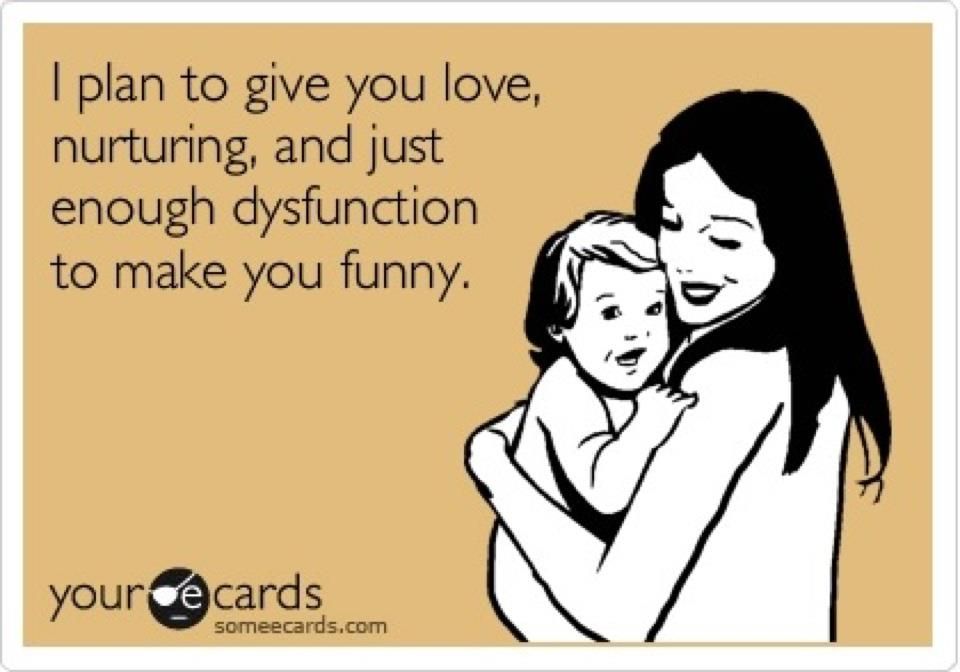
Be sure to call your baby's doctor if your baby seems ill or has the following symptoms in addition to excessive crying: 1
- fever;
- shortness of breath or cough;
- vomiting;
- diarrhea;
- rash;
- crying worse when the child is picked up or moved;
- increased irritability or lethargy.
How to soothe a crying baby
Once you have ruled out some potential causes of crying, you will have a better idea of how to soothe your baby. The most important thing to remember is not to get upset and stay as calm as possible.
Here are some tips and tricks on how to calm your baby: 2
1. Swaddle your baby.
One of the most useful techniques to soothe a crying baby is swaddling. When doing this, make sure that you do not cover the child's head and do not overheat him.





